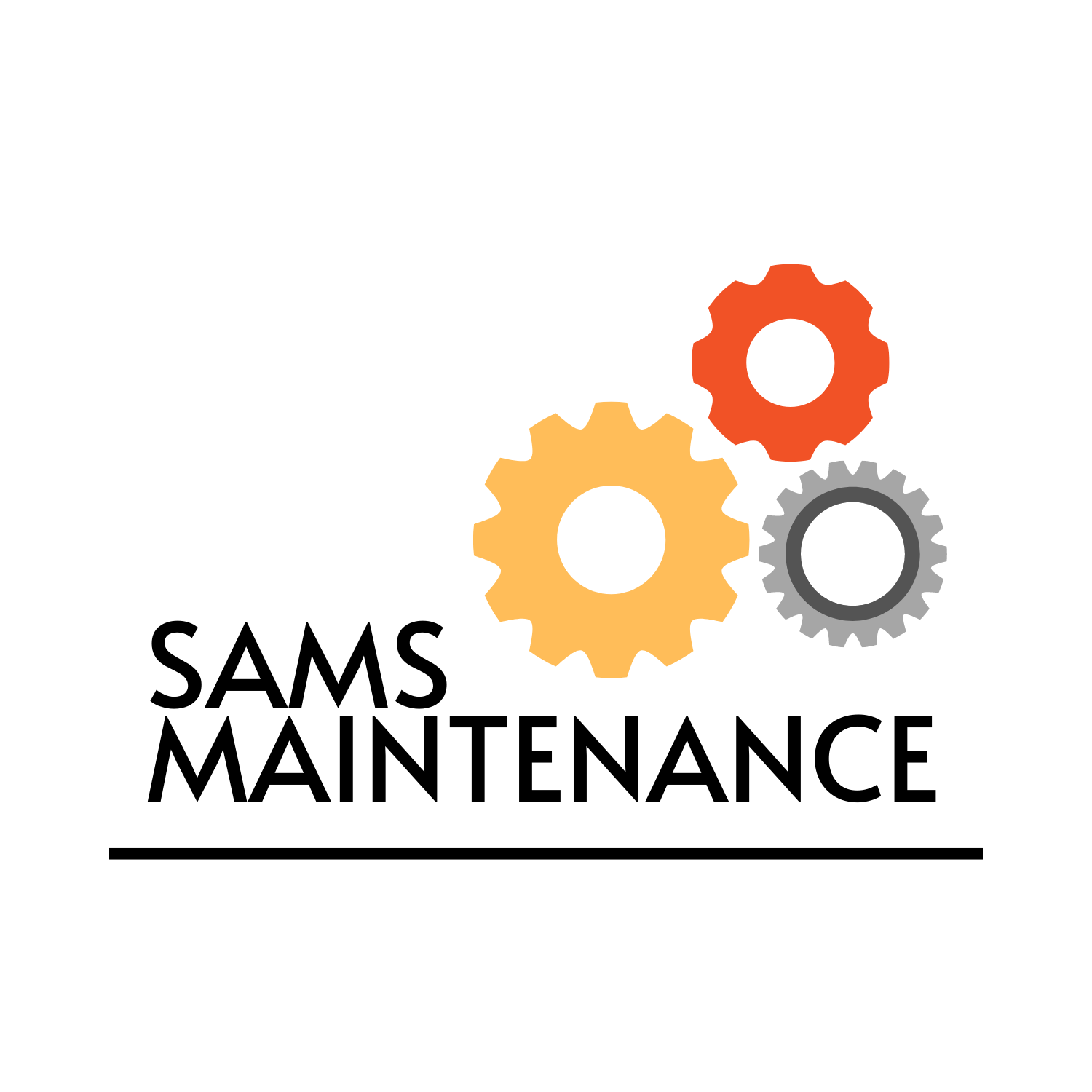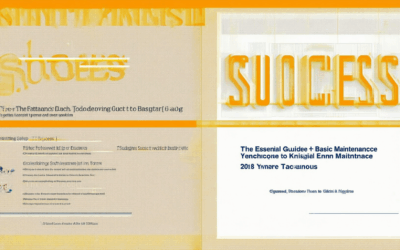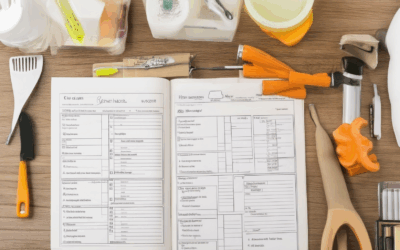Keeping your home in top shape year-round requires careful planning and attention to detail. As seasons change, so do the needs of your home, making seasonal maintenance projects essential for preserving its value and functionality. Whether you’re a seasoned homeowner or new to the responsibilities, understanding what needs attention and when can make all the difference. From checking gutters and clearing debris to inspecting roofs and ensuring plumbing systems are in order, there’s always something to tackle. But with the right approach, you can stay ahead of potential repair issues and maintain your home in peak condition. This comprehensive guide will walk you through the key seasonal maintenance projects, providing practical tips and checklists to ensure your home stays in great shape all year long. Ready to take control of your home maintenance? Let’s dive in and explore the essential projects that will keep your property in prime condition.
Key Takeaways
– Seasonal Maintenance: Prioritize tasks like HVAC system checks, gutter cleaning, and plumbing inspections to ensure your home stays in top shape throughout the year.
– Home Improvement: Invest in preventive care for your property to avoid costly repairs and extend the lifespan of your systems.
– Property Upkeep: Regularly inspect and maintain exterior features, including roofs, decks, and driveways, to ensure functionality and safety.
– Planned Maintenance: Create a detailed checklist to stay organized, covering everything from appliance checks to security system tests.
– Efficiency and Safety: Ensure your home operates efficiently and securely by addressing potential issues early through regular inspections.
– Functionality and Value: A well-maintained home retains its value and remains comfortable for years to come.
– Protection and Prevention: Focus on tasks that protect your home from damage and keep it in great condition for family and guests.
– Longevity and Comfort: Regular maintenance ensures your home runs smoothly, providing comfort and reliability.
– Convenience and Organization: Develop a manageable plan to tackle tasks efficiently, balancing practicality with realistic expectations.
– Expertise and Guidance: Seek professional advice when needed to ensure tasks are done dependably and effectively.
– Comprehensive Care: Tailor your maintenance routine to meet the unique needs of your home and family.
By following these key points, you can create a robust maintenance strategy that keeps your home in excellent shape year-round.

Understanding the 1% Rule for Home Maintenance
The 1% rule for home maintenance is a simple yet effective strategy to prepare for unexpected repair costs. Here’s a breakdown of what it involves:
- 1% of the Home’s Purchase Price : Set aside 1% of the total price you paid for your home each year for maintenance. This creates a reserve fund to cover unforeseen repair costs.
- Annual Budget Calculation : For a $300,000 home, this would mean saving $3,000 annually or approximately $250 monthly.
- Purpose of the Fund : This money is meant for repairs, replacements, and unexpected issues like plumbing, electrical work, or roof damage.
Why the 1% Rule Works:
- Preparedness : Helps avoid financial stress when emergencies occur.
- Longevity : Regular maintenance can extend the life of your home and reduce major repair costs over time.
- Flexibility : Allows you to address specific needs based on your home’s condition.
Considerations Beyond the 1% Rule:
- Home Age and Condition : Older homes may require more frequent maintenance, potentially increasing your annual contribution.
- Specialized Systems : Homes with unique features like septic tanks or solar panels may need additional funding.
- Unexpected Costs : Natural disasters or rare appliance failures can exceed typical maintenance budgets.
To Enhance Your Maintenance Plan:
- Create a Detailed Budget : Track all maintenance expenses and adjust your savings accordingly.
- Prioritize Repairs : Address minor issues before they escalate to prevent costly damage.
- Consider Insurance : Explore maintenance coverage options to supplement your savings.
For More Resources:
- HomeAdvisor – Connect with local professionals for home maintenance services.
- Fixer Upper – Tips and guides for DIY home maintenance projects.
- Sams Maintenance – Expert advice and resources for homeowners.
By following the 1% rule and staying proactive, you can protect your home and budget from unexpected expenses.
What Maintenance Does a House Need Every Year?
Annual home maintenance is crucial to keep your property in great shape and prevent costly repairs. Here’s a comprehensive checklist to guide you through the essential tasks:
Exterior Maintenance
- Roof Inspection:** Inspect for missing shingles, damaged panels, or leaks.
- Gutters:** Clean and check for blockages or damage to ensure proper drainage.
- Siding:** Look for peeling paint, warping, or loose boards.
- Windows:** Check for cracks, broken seals, or drafts.
- Deck and Porch:** Inspect for rot, warped wood, or loose railings.
- Grading:** Ensure the yard slopes away from the house to prevent water pooling.
Interior Maintenance
- Walls and Floors:** Look for cracks, stains, or signs of water damage.
- Attic and Crawl Space:** Inspect for pests, moisture, or sagging beams.
- Bathrooms:** Check for leaky fixtures, mold, or damaged tiles.
- Kitchen:** Examine countertops, cabinets, and appliances for wear or damage.
- Smoke Detectors and Carbon Monoxide Detectors:** Test and ensure they’re functioning properly.
- Ground Floor:** Check for tripping hazards and uneven flooring.
Heating, Ventilation, and Air Conditioning (HVAC)
- Servicing:** Schedule a professional inspection and cleaning to ensure efficiency.
- Filters:** Replace or clean air filters to maintain airflow.
- Ductwork:** Inspect for leaks, blockages, or rodents.
Plumbing
- Pipes:** Look for leaks or corrosion under sinks, tubs, and toilets.
- Drain Traps:** Ensure they’re clear to prevent clogs.
- Water Pressure:** Test all faucets for low or high pressure.
- Water Heater:** Check for leaks or sediment buildup.
Electrical System
- Outlets and Switches:** Check for flickering lights or warm switches.
- Circuit Breakers:** Ensure they trip correctly and reset properly.
- Appliance Circuits:** Verify that heavy-duty appliances are connected properly.
- Light Fixtures:** Inspect for loose bulbs or damaged sockets.
Fire Safety
- Fire Extinguishers:** Check expiration dates and functionality.
- Smoke Detectors:** Replace batteries and test operation.
- Carbon Monoxide Detectors:** Ensure they’re working and properly placed.
Yard and Landscaping
- Lawn Care:** Dethatch, fertilize, and aerate the soil.
- Tree and Shrubs:** Prune dead branches and remove weeds.
- SPRINGFIELD Sprinkler System:** Check for leaks and ensure proper coverage.
- Decks and Patios:** Inspect for structural integrity and cleanliness.
Water Systems
- Well and Water Supply:** Check for leaks or contamination.
- Water Softener:** Ensure it’s functioning properly and salt levels are correct.
- Whole House Filter:** Clean or replace as needed.
- Pressure Tank:** Check for pressure fluctuations.
Foundation and Structural Integrity
- Cracks:** Inspect for small cracks that may indicate foundation issues.
- Sealing:** Apply waterproofing sealant to prevent moisture damage.
- Termite Inspection:** Schedule a professional check for pests.
Security Systems
- Door Locks:** Test and lubricate if necessary.
- Alarm System:** Ensure it’s armed and functioning properly.
- Home Security Cameras:** Check for proper placement and functionality.
Garbage Disposal and Other Appliances
- Garbage Disposal:** Clean and lubricate periodically.
- Range Hood:** Clean vent pipes and ensure it’s functioning properly.
- Water Heater:** Check for leaks and proper temperature regulation.
Seasonal Tasks
- Winter Preparation:** Check for frozen pipes, clear gutters, and insulate attics and crawl spaces.
- Spring Cleaning:** Deep clean and declutter to prepare for the new season.
By completing these annual maintenance tasks, you’ll extend the life of your home and ensure it remains safe and comfortable for years to come. Remember to schedule professional inspections for areas like roofs, chimneys, and septic tanks to catch potential issues early. Keep your home well-maintained with regular checks and updates!

What is Seasonal Maintenance?
Seasonal maintenance is essential for keeping your home in optimal condition throughout the year. It involves routine tasks tailored to the specific needs of each season, ensuring your property remains durable, comfortable, and energy-efficient. Whether it’s preparing for spring cleaning, organizing fall chores, or readying for winter preparation, seasonal maintenance helps prevent issues before they arise.
Key Components of Seasonal Maintenance
- Spring Maintenance: Clean gutters, check the roof for damage, prune trees, and prepare the lawn for growth.
- Summer Maintenance: Inspect air conditioning units, clean outdoor furniture, and maintain decks or patios.
- Fall Maintenance: Rake leaves, clean chimneys, and prepare for colder weather.
- Winter Maintenance: Check for ice dams, inspect pipes for freezing, and service heating systems.
Why Seasonal Maintenance Matters
Regular seasonal maintenance prevents small issues from becoming major problems. It also enhances your home’s curb appeal and ensures safety for family members. By addressing tasks like lawn care, gutter cleaning, and HVAC checks, you can extend the lifespan of your property and save money on costly repairs down the line.
Tools for Effective Seasonal Maintenance
- Garden tools like rakes and trimmers
- High-quality cleaning supplies
- Inspection cameras for hard-to-reach areas
- Professional-grade heaters for cold weather work
Stay Ahead of the Game
Plan ahead by marking your calendar with seasonal maintenance dates. Create a checklist tailored to your home’s unique needs. For instance, if you live in an area prone to heavy snowfall, prioritize roof and chimney inspections in late autumn.
Resources for Further Assistance
For detailed guides and professional advice, visit our DIY Projects section. Explore our Professional Services page for expert support when tackling complex tasks.
By prioritizing seasonal maintenance, you ensure your home stays in peak condition all year round. Regularly updating your knowledge on best practices and utilizing the right tools will make the process smoother and more effective.

Home Maintenance Services
Home maintenance ensures your property remains in excellent condition year-round. Here are some essential services to consider:
- General Property Maintenance
- Lawn care and landscaping
- Garden maintenance and pruning
- Leaf cleanup and debris removal
- Pest control and extermination
- Driveway and sidewalk repair
- Pressure washing and exterior cleaning
- Landscaping & Outdoor Care
- Lawn mowing and edging
- Tree and shrub trimming
- Planting and garden design
- Outdoor lighting installation
- Deck and patio maintenance
- HVAC & Plumbing
- Furnace and air conditioning servicing
- Water heater maintenance
- Plumbing fixture repair
- Leak detection and repair
- Energy efficiency upgrades
- Electrical & Appliance Service
- Appliance repair and maintenance
- Electrical wiring inspection
- Smart home automation setup
- Outlet and switch installation
- Lighting upgrades
- Interior Maintenance
- House cleaning and organizing
- Upholstery and carpet cleaning
- Painting and wall repairs
- Flooring maintenance
- Window treatment installation
- Security & Safety
- Home security system installation
- Door and window locks upgrade
- Surveillance camera setup
- Fire safety equipment maintenance
- Emergency exit signs and lighting
For professional assistance, consider reaching out to companies like HomeServe , Angie’s List , or local handyman services. These providers offer comprehensive maintenance plans tailored to your needs.
Remember to schedule regular inspections and maintenance to prevent minor issues from becoming major problems. Investing in routine care can save you time and money in the long run.
How to Create a Home Maintenance Schedule
To keep your home in great shape, creating a maintenance schedule is essential. Below is a comprehensive guide to help you organize and manage your home maintenance tasks effectively.
Step 1: Categorize Your Tasks
Start by dividing your home maintenance tasks into categories based on the type of work required:
- Plumbing Systems : Check for leaks, test water pressure, inspect water heater, clean drains
- Electrical Systems : Inspect outlets, switches, circuit breakers, check GFCIs
- Heating, Ventilation & Air Conditioning (HVAC) : Replace air filters, inspect ductwork, check the furnace
- Exterior Maintenance : Inspect roof, gutters, siding, deck, and driveway
- Appliances : Clean and maintain major appliances like refrigerators, dishwashers, and stoves
- Landscaping : Trim trees, mow lawn, prune shrubs, clean gutters
- Fire Safety : Check smoke detectors, fire extinguishers
- Security Systems : Test alarms, cameras, and locks
Step 2: Determine Task Frequency
Assign frequency to each task based on its importance and likelihood of requiring attention:
- Monthly Tasks : – Check for plumbing leaks – Test water pressure – Clean and inspect drains – Replace HVAC air filters – Service major appliances
- Quarterly Tasks : – Inspect plumbing pipes – Check electrical systems – Clean gutters – Service the chimney – Examine windows and doors
- Annual Tasks : – Full HVAC system inspection – Roof inspection – Foundation check – Water heater servicing – Fire safety system testing
Step 3: Prepare Tools and Materials
Before starting, gather the necessary tools and materials to ensure smooth execution of tasks:
- Screwdrivers
- Flashlight
- Ladder
- Garden gloves
- Protective eyewear
- Basic tool kit
Step 4: Schedule Regularly
Set aside specific dates or times for each task to maintain consistency. Use a maintenance checklist template to organize your schedule effectively.
Step 5: Stay Organized with Documentation
Keep a record of all maintenance activities. Note the dates and any issues encountered. This helps in tracking progress and planning future tasks efficiently.
Step 6: Review and Adjust
Regularly review your maintenance schedule and adjust as needed. Consider seasonal changes or new additions to your home that may require additional tasks.
Additional Tips
• Prioritize tasks based on urgency and potential impact.
• Avoid overcomplicating tasks; focus on quality over quantity.
• Stay informed about new techniques and products for home maintenance.
• Consider hiring professionals for tasks you’re unsure about or lack the expertise to handle safely.
By following these steps, you can create a personalized and effective home maintenance schedule tailored to your needs.

Example of a Maintenance Service
Maintenance services encompass a wide range of activities designed to ensure the longevity, efficiency, and functionality of various systems, equipment, and assets. One common example of a maintenance service is:
- Furnace Maintenance: Regularly inspecting, cleaning, and servicing heating systems to ensure optimal performance and safety. This includes checking air filters, examining venting ducts, and testing the furnace’s ignition system.
- Equipment Preventative Care: Performing routine checks and minor repairs on machinery before issues arise, which can prevent costly breakdowns and extend equipment lifespan.
- Vehicle Maintenance: Routine tasks like oil changes, tire rotations, and brake inspections to keep cars running smoothly and safely.
- Plumbing Maintenance: Inspecting pipes, fixing leaks, and ensuring proper water flow to prevent plumbing emergencies.
- Appliance Maintenance: Cleaning and servicing appliances like refrigerators, dishwashers, and laundry machines to ensure they operate efficiently and reliably.
Maintenance services are typically scheduled at regular intervals, often based on manufacturer recommendations or industry standards. For instance, a furnace might require biannual inspections, while a car might need monthly oil changes. These services aim to preserve functionality, reduce repair costs, and enhance overall performance.
By investing in maintenance, individuals and organizations can avoid unexpected failures, extend the life of their assets, and ensure consistent performance across various systems and equipment.




0 Comments